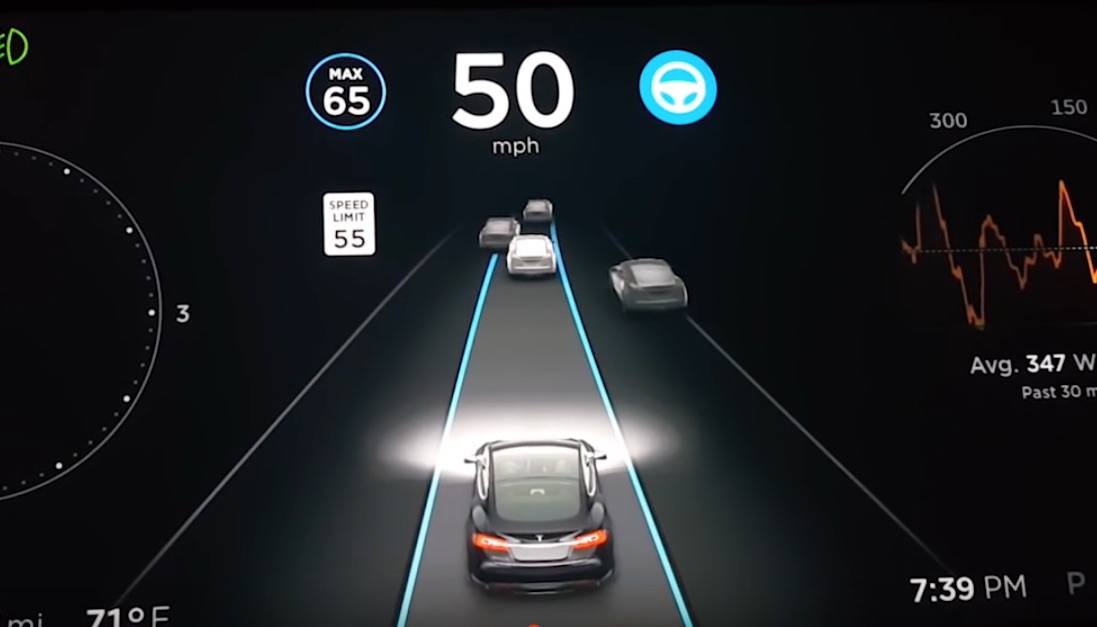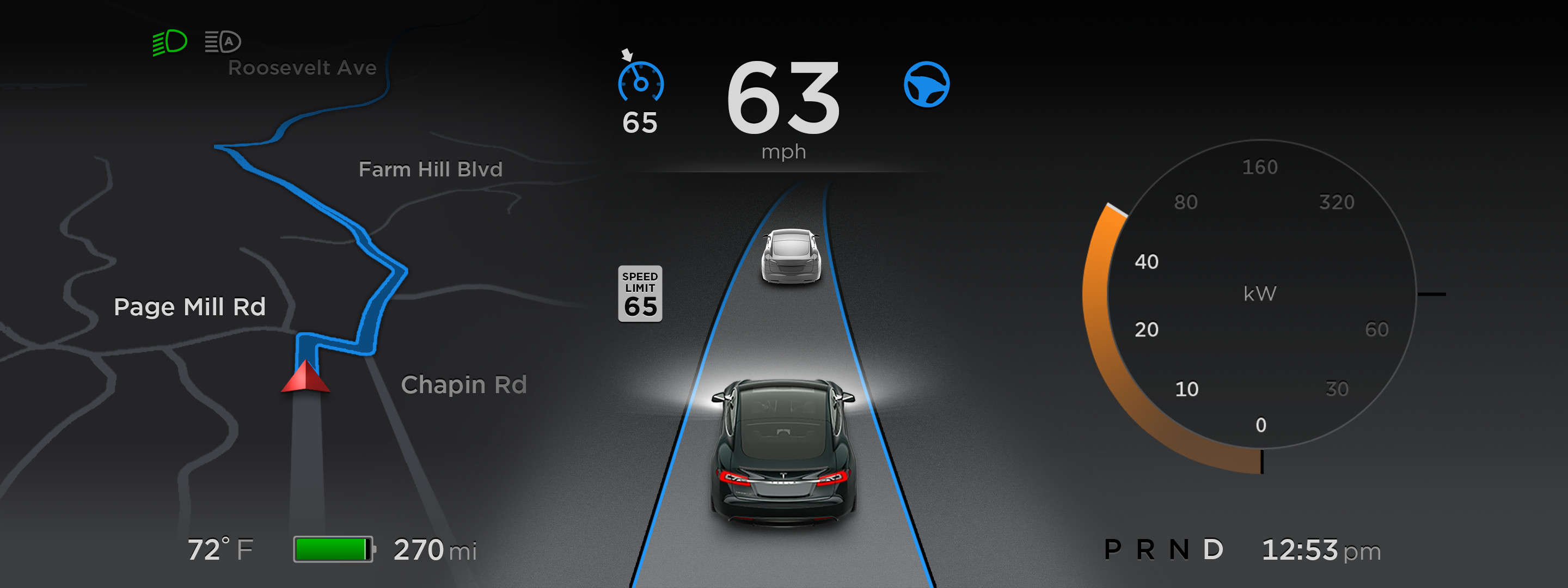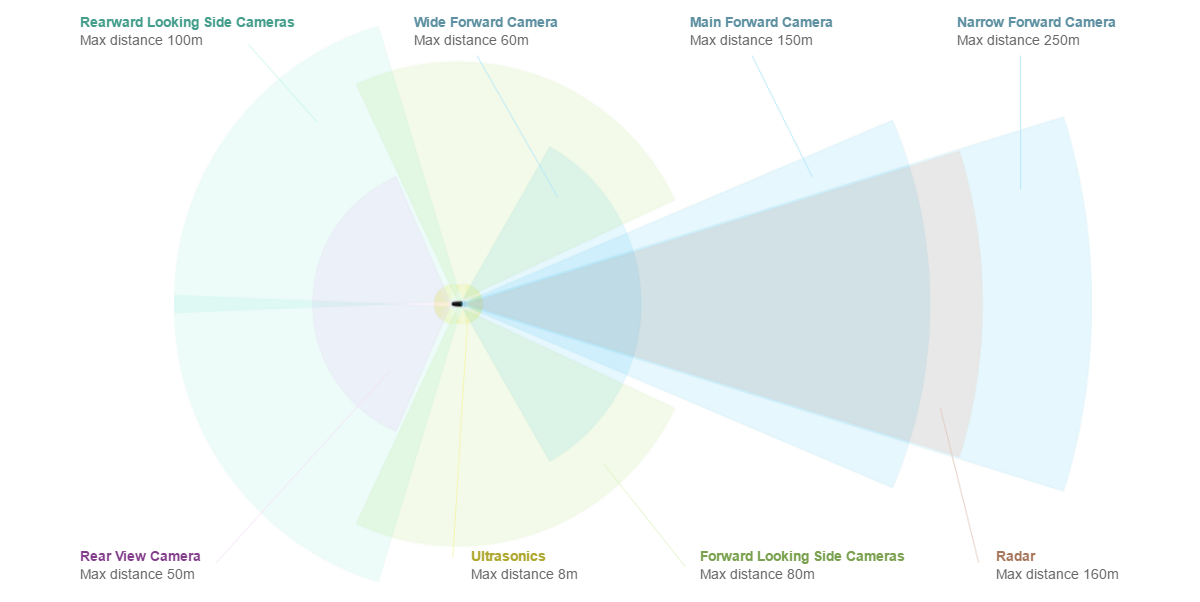Tesla is ROCKING the industry. OTA, camera only, fleet learning, shadow mode, Autopilot, Gega Factory, Cybertruck etc. There is a saying: “看不到,看不懂,追不上(can’t see it; can’t understand it; can’t chase it)”. I have to say most Tesla news are more exciting than news from traditional OEMs. and my best wishes to Tesla to grow greater.
Tesla timeline
2019
release Cybertruck

Tesla software V10.0 OTA:
- Smart Summon(enable vehicle to navigate a parking lot and come to them or their destination of choice, as long as their car is within their line of sight)
- Driving Visualization(HMI)
- Automatic lane change
- lane departure avoidance: Autopilot will warn the driver and slow down the vehicle
- emergency lane departure avoidance: Autopilot will steer the vehciel back into the driving lane if the off-lane may lead to collision
- Model 3 safety reward from IIHS and Euro NCAP
- Tesla Insurance
- Megapack: battery storage for massive usage
- V3 super charging station: more powerful station and pre-heating battery
- Powerpack: energy storage system in South Austrilia
- Model 3 release (March) and the most customer satisfied vehicles in China
- cut-off 7% employees globally(Jan)
2018
- race mode Model 3
- Model 3 the lowest probability of injury by NHTSA: what make Model 3 safe
- Tesla V9.0 OTA:
- road status info
- climate control
- Navigate on Autopilot
- Autosteer and Auto lane change combination
- blindspot warning(when turn signal in engaged but a vehicle or obstacle is detected in the target lane)
- use high occupancy vehicle(HOV) lane
- obstacle aware acceleration(if obstacle detected, acc is automatically limited)
- Dashcam (record and store video footage)
- Tesla privatization (Aug)
2017
- super charing station 10000 globally
- collabration with Panasonic to produce battery at Buffalo, 1Mpw
2016
- purchase SolarCity
- purchase Grohmann Enginering(German): highly automatic manufacture
massive product of Tesla vehicles with hardwares to support fully self driving(Oct)

- 8 cameras to support 360 view, in front 250 meters env detection
- 12 Ultrasonic
- front Radar
- ADS HAD (x40 powerful than previous)
- ADS algorithm: deep learning network combine with vision, radar and ultrasonic(AEB, collision warning, lane keeping, ACC is not included yet)
- Autopilot 8.0 OTA, or namely “see” the world through Radar

deadly accident across the truck(2016.7)
- HEPA defense “biological weapon”
- accept reservation for Model 3(march)
- Tesla 7.1.1 OTA: remote summon
- Tesla 7.1 OTA:
- vertical parking
- speed gentelly in living house area
- highway ACC, traffic jam following
- more road info in HMI, e.t.c truck, bus, motobike

2015
- Autopilot 7.0 update:
- Autopark(requires driver in the car and only parallel parking)
- Autosteer
- Auto lane changing
- UI refresh
- Automatic emergency steering
- side collision warning
Autopilot evoluvation
in a nutshell, Autopilot is dynamic cruise control(ACC) + Autosteer + auto lane chang.
Autopilot 7.0 relied primarily on the front-facing camera. radar hasn’t been used primarily in 7.0 was due to false positives(wrong detection). but in 8.0 with fleet learning. 8.0 made radar the main sensor input.
almost entirely eliminate the false positive – the false braking events – and enable the car to initiate braking no matter what the object is as long as it is not large and fluffy
but any large, or metallic or dense, the radar system is able to detect and initiate a braking event. both when Autopilot active or not(then AEB)
even if the vision system doesn’t recognize the object, it actually doesn’t matter what the object is(while vision does need to know what the thing is), it just knows there is somehting dense.
fleeting learning will mark the geolocation of where all the false alarm occurs, and what the shape of that object. so Tesla system know at a particular position at a particular street or highway, if you see a radar object of a following shape - don’t worry it’s just a road sign or bridge or a Christmas decoration. basically marking these locations as a list of exceptions.
the radar system can track 2 cars/obstacles ahead and imporove the cut-in , cut-off reponse. so in case the car in front suddenly swerve out of the way of an obstacle.
the limit of hardware is reaching, but there will be still a quite improvement as the software and data would improve quite amount.
but still perfect safety is really an impossible goal, it’s really about improving the probability of safety.
in Autopilot 9.0, Navigate on Autopilot(Beta) intelligently suggests lane changes to keep you on your route in addition to making adjustments so you don’t get stuck behind slow cars or trucks. Navigate on Autopilot will also automatically steer toward and take the correct highway interchanges and exits based on your destination.
Autopilot is keeping evaluation with more exicting features:
- traffic light and stop signs detection
- enhanced summon
- naviagte multi-story parking lots
- automaticly send off vehicle to park
- Autopilot on city streets
- Robotaxi service
Tesla Hardware
Hardware 1.0
or Autopliot 1 or AP1, it was a joint development between Mobileye and Tesla. It featured a single front-facing camera and radar to sense the environment plus Mobileye’s hardware and software to control the driving experience. AP1 was so good that when Tesla decided to build their own system, it took them years to catch up to the baseline Autopilot functionality in AP1. Mobileye EyeQ3 is good to mark/label in free space, intuitive routing, obstacle-avoid, and traffic signal recognization etc. but it has a few limitations to env light, and reconstruct 3D world from 2D images etc does work as expect all the time. and EyeQ3 detects objects with traditional algorithms, not cool!
AP1 Hardware Suite:
- Front camera (single monochrome)
- Front radar with range of 525 feet / 160 meters
- 12 ultrasonic sensors with 16 ft range / 5 meters
- Rear camera for driver only (not used in Autopilot)
- Mobileye EyeQ3 computing platform
AP1 Core features:
- Traffic-Aware Cruise Control (TACC), start & stop
- Autosteer (closed-access roads, like freeways)
- Auto Lane Change (driver initiated)
- Auto Park
- Summon
Hardware 2.0
AP2 highlights machine learning/neurual networks with camera inputs, so with more sensors and more powerful computing platforms.

AP2 Hardware Suite:
- Front cameras (3 cameras, medium, narrow and wide angle)
- Side cameras (4 total, 2 forward and 2 rear-facing, on each side)
- Rear camera (1 rear-facing)
- Front radar with range of 525 feet / 160 meters
- 12 ultrasonic sensors with 26 ft range / 8 meters
- NVIDIA DRIVE PX 2 AI computing platform
AP2 Core features:
- Traffic-Aware Cruise Control (TACC), start & stop
- Autosteer (closed-access roads, like freeways)
- Auto Lane Change (driver initiated)
- Navigate on Autopilot (on-ramp to off-ramp)
- Auto Park
- Summon
there was AP2.5 update, with redundant NVIDIA DRIVE PX2 and forward radar with longer range (170m)
Hardware 3.0
or Full Self Driving(FSD) Computer,

Telsa guys
Sterling Anderson from 2015 - 2016, director of Autopilot program.
Chris Latter in early 2017, VP for Autopilot software
Jim Keller, from 2016 to 2017, VP for Autopilot hardware
David Nister, from 2015 to 2017, VP for Autopilot
Stuart Bowers from 2018 -2019, VP for Autopilot
Pete Bannon, from 2016 to now, Director for Autopilot hardware
Andrej Karpathy, from 2017 to now, Director of AI
Tesla in media
zhihu: Tesla Autopilot history
2017 Mercedes-Benz E vs 2017 Tesla Model S
Tesla’s Autopilot 8.0: why Elon Mush says perfect safety is still impossible
Transcript: Elon Musk’s press conference about Tesla Autopilot under v8.0 update
Tesla reveals all the details of its autopilot and its software v7.0
Tesla V10: first look at release notes and features
Tesla Autopilot’s stop sign, traffic light recognition and response is operating in shadow mode
Tesla’s full self-driving suite with enhanced summon
Tesla’s Robotaxi service will be an inevitable player in the AV taxi race
Tesla Autopilot AP1 vs AP2 vs AP3
Future Tesla Autopilot update coming soon